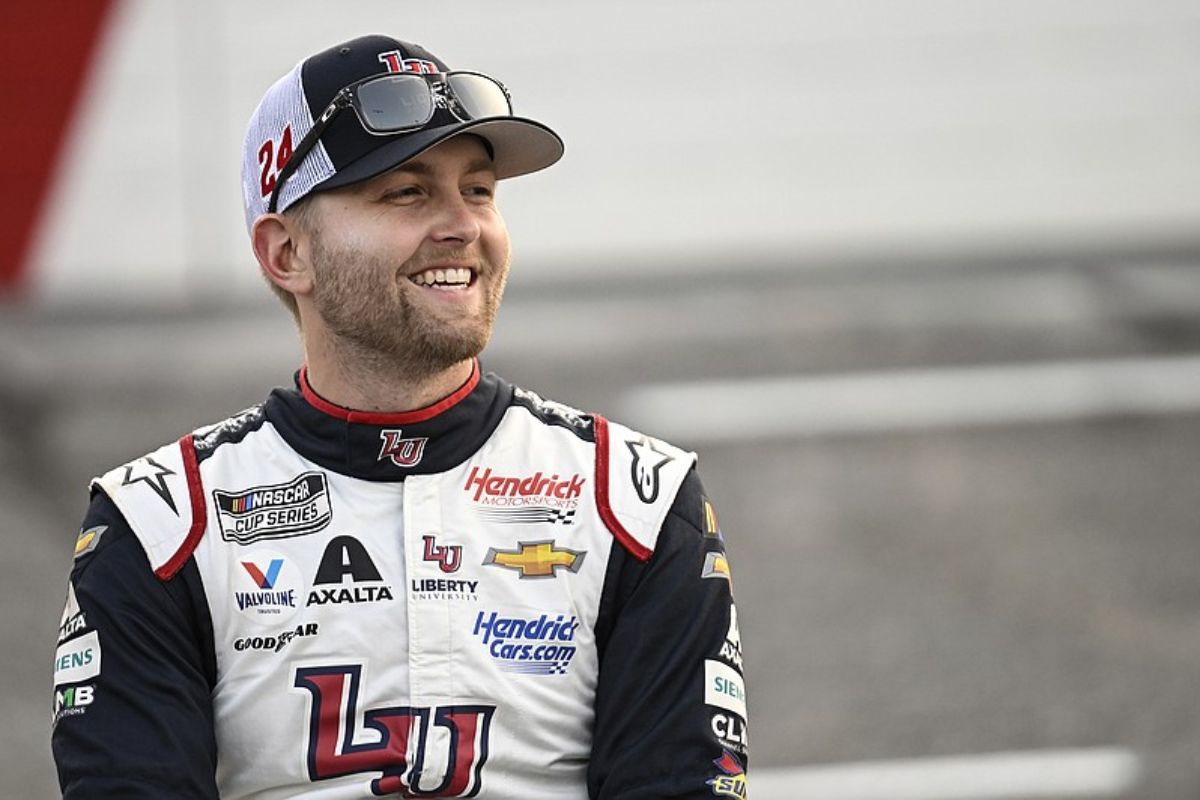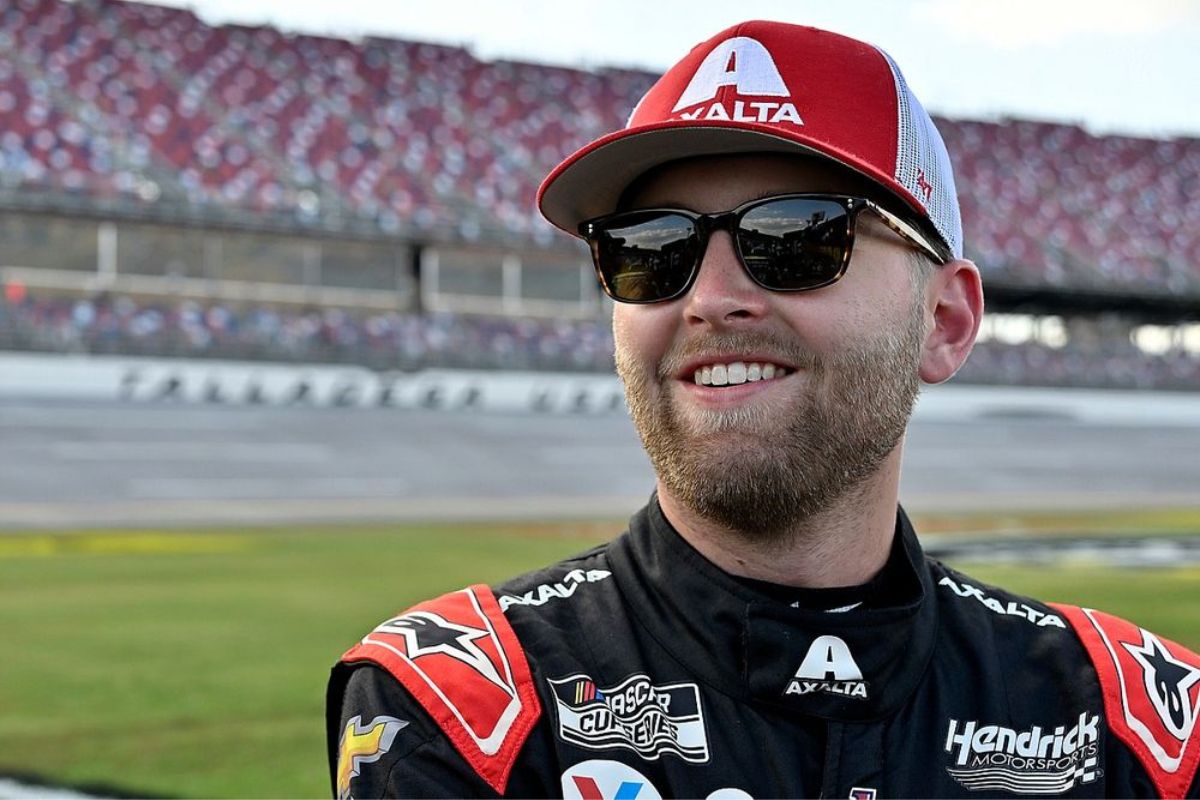William Byron Takes Center Stage With COTA Complaints: William Byron’s frustrations highlight importance concerns at COTA. Disadvantages due to track limits impact competitiveness. NASCAR’s penalties and reviews aim to guarantee fair racing. Byron’s complaints shed light on challenges drivers face. Strategic enforcement vital for competitive integrity. Potential changes at COTA to address issues. Track improvements and driver feedback essential for progress. Safety measures and rule enforcement must enhance fairness. NASCAR’s decisions shape future races. Byron’s remarks underline essential dynamics in NASCAR. More insights available on the evolving COTA situation
Key Takeaways
- William Byron expressed discontent with restrictive track boundaries at COTA.
- Byron highlighted competitive disadvantages faced due to track limits.
- His complaints shed light on the challenges and impact of track limits on performance.
- Byron’s remarks underscored the importance of fair competition and level playing field.
- His comments emphasized the need to address track limit issues for competitive integrity.
NASCAR’s COTA Penalties: 40 Issued Across Cup, Xfinity, and Truck Series
During the recent event at the Circuit of the Americas (COTA), NASCAR imposed a total of 40 penalties spanning the Cup, Xfinity, and Truck Series, sparking concerns over the track’s importance and loyalty to regulations. The penalties were primarily related to issues with track boundaries, causing a stir regarding competitive integrity. Drivers voiced complaints about the consistency of penalties, highlighting potential discrepancies in enforcement.
The enforcement of track boundaries is vital in motorsports to guarantee fair competition and maintain safety standards. The multitude of penalties issued at COTA indicates a significant challenge in upholding these boundaries effectively. This raises questions about the track’s ability to provide a level playing field for all competitors and the need for stricter enforcement measures.
In the world of NASCAR, penalty consistency is paramount to instill trust and confidence in the sport. Drivers and teams rely on a predictable framework of rules and penalties to guide their decisions on the track. The high number of penalties at COTA may have caused uncertainty among participants, leading to concerns about the fairness of competition.
Moving forward, NASCAR must address the issues surrounding track enforcement at COTA to uphold the sport’s standards of competitive integrity. Analyzing the root causes of the penalties and implementing corrective measures will be essential to prevent similar incidents in the future and maintain the credibility of NASCAR events.

Review of Procedures: Potential Exclusion of COTA for Next Season
NASCAR’s assessment of procedures at the Circuit of the Americas (COTA) includes deliberation on the potential exclusion of the track from next season’s race calendar. This move comes in response to the safety concerns raised by drivers and officials during the recent events at COTA. Driver feedback has been a pivotal factor in this decision, with concerns ranging from track layout challenges to inadequate safety measures. The discussions also revolve around rule enforcement, as some drivers felt that penalties were inconsistently applied during the races, impacting fair competition.
The potential exclusion of COTA for the upcoming season reflects NASCAR’s commitment to ensuring a level playing field for all competitors. By addressing the issues raised at COTA, NASCAR aims to uphold its standards of safety, fairness, and competition integrity across all tracks. Fan reactions have also played a role in shaping NASCAR’s considerations, as the fanbase’s support and engagement are essential for the sport’s success.
As NASCAR continues to review procedures and assess the future of COTA on its race calendar, the organization remains focused on maintaining the highest standards of competition while prioritizing the safety and satisfaction of drivers, teams, and fans. The outcome of these deliberations will likely shape NASCAR’s approach to track selection and event planning in the seasons to come.
Corner-Cutting Controversy: Unfair Advantages and Penalties
The controversy surrounding corner-cutting at COTA has raised concerns about unfair advantages and the enforcement of penalties in NASCAR races. One of the major issues identified was drivers taking shortcuts, particularly through the esses section of the track. This corner-cutting practice was deemed to provide a significant performance impact by reducing a driver’s lap time, hence potentially offering an unfair advantage over competitors aiming to navigate the track within the defined boundaries for fair competition.
Driver complaints regarding corner-cutting at COTA highlighted the need for stringent rule enforcement to uphold the integrity of the sport. NASCAR swiftly responded to these concerns by penalizing drivers who violated track boundaries, ensuring that all participants adhere to the same set of regulations to maintain a level playing field.
The performance impact of corner-cutting cannot be understated, as it not only affects individual race outcomes but also the overall perception of fairness and competitiveness within NASCAR events. By addressing these issues promptly and decisively, NASCAR demonstrates its commitment to upholding the principles of fair competition and ensuring that drivers compete on an even footing without resorting to shortcuts that could compromise the integrity of the sport.
William Byron’s Displeasure with Track Limits
The aftermath of the Corner-Cutting Controversy at COTA has brought to light Cup race winner William Byron’s clear discontent with the track limits, as revealed in a recent interview with Dale Earnhardt Jr on the Dirty Mo Media podcast. Byron expressed his frustrations with the track boundaries, highlighting the competitive disadvantages they posed and the impact on performance. Here are the key points from Byron’s injustices:
- Driver Frustrations: Byron’s vocal dissatisfaction sheds light on the frustrations many drivers experienced at COTA due to the restrictive track limits. These limitations not only affected individual performances but also influenced the overall racing dynamics.
- Competitive Disadvantages: Byron’s comments underscore the competitive disadvantages drivers faced when maneuvering the track boundaries. The strict enforcement of these limits created challenges that impacted the fairness of the competition.
- Racing Challenges: Byron’s remarks emphasize the unique racing challenges presented by the track limits at COTA. Essential to the race, these limits became a vital aspect of the race, profoundly influencing drivers’ strategies and outcomes.
Byron’s candid remarks provide valuable insights into the intricate world of NASCAR racing and the pivotal role track limits play in shaping the competitive landscape.
William Byron said:
“Yeah, I mean so I agree on that a lot of times. You know you win and your judgment is a little different, but I do feel like, so during the race for me like I hated the track limits. Because as the leader I felt like I was at a disadvantage like if I’m if I want to be aggressive with my line and make time, if I’m in second or third like I’m going to push that stuff a lot more.”
NASCAR’s Strategic Focus on Enforcing Track Limits
In light of NASCAR’s strategic emphasis on upholding track boundaries, particularly in the challenging esses section of COTA, a meticulous approach to enforcing these limits underscores the commitment to preserving fair competition in the racing environment. By delineating and enforcing track limits, NASCAR aims to guarantee that all drivers have an equal opportunity to compete without gaining an unfair track advantage through shortcuts or by exceeding designated boundaries. This focus on maintaining track integrity is vital for the overall race dynamics at COTA, as it helps create a level playing field where success is determined by skill, strategy, and performance rather than by exploiting loopholes in track boundaries.
The officiating challenges at COTA further highlight the importance of strict enforcement of track limits. With the layout of the esses section and the high speeds involved, monitoring and penalizing track limit violations require a keen eye and quick decision-making from race officials. NASCAR’s dedication to addressing these challenges demonstrates a commitment to upholding the integrity of the sport and ensuring that the competitive spirit remains intact.
In essence, NASCAR’s strategic focus on enforcing track limits at COTA serves to maintain fair competition, uphold race dynamics, and mitigate any potential advantages gained through deviating from designated track boundaries. By addressing the officiating challenges associated with enforcing these limits, NASCAR is reinforcing the principles of integrity and sportsmanship that underpin the essence of competitive racing.

Looking Ahead: Potential Changes for COTA Races
With NASCAR’s focus on maintaining fair competition through track limit enforcement at COTA, the attention now shifts towards potential adjustments for future races at the circuit. As the racing community enthusiastically anticipates news on whether COTA will host races in the upcoming season, there are several key areas that NASCAR may consider for improvement based on the challenges faced during the recent event:
- Track Improvements: Evaluating and enhancing the track layout, surface conditions, and safety features to guarantee a more competitive and secure racing environment for drivers.
- Driver Feedback: Actively seeking input from drivers who competed at COTA to understand their experiences, challenges faced, and suggestions for enhancing the overall racing experience at the circuit.
- Safety Measures: Implementing additional safety protocols, such as improved barriers, enhanced runoff areas, and better communication systems to address any safety concerns highlighted during the event.
Considering the importance of rule enforcement, safety, and competition fairness in NASCAR events, these potential changes at COTA could play a significant role in shaping the future of races at the circuit. NASCAR’s strategic decisions in response to the recent challenges will be vital in ensuring a better and more exciting racing experience for both drivers and fans at COTA.
News in Brief
NASCAR’s recent penalties at COTA have sparked debate regarding track limits and fair competition. William Byron’s grievances underscore the obstacles drivers encounter when adhering to these rules.
The potential exclusion of COTA for future races raises questions about the track’s appropriateness for NASCAR events. Moving forward, NASCAR’s focus on enforcing track limits will likely prompt modifications in race procedures to guarantee a level playing field for all competitors.
Also Read: Kyle Petty’s Bold Prediction: William Byron Ascends to Hendrick Motorsports’ Pinnacle

